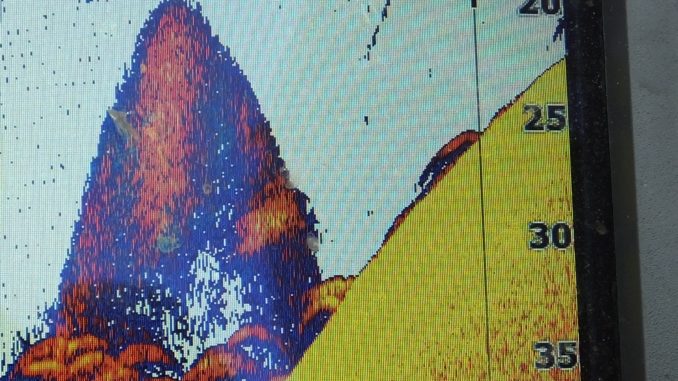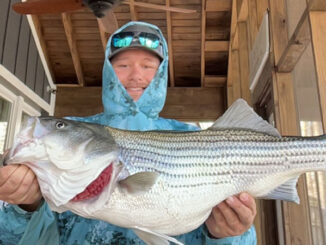
Anchoring is also crucial
Guide Justin Whiteside of Rock Hill trusts his electronics to depict exactly where fish are located and where to present his baits.
“Proper anchoring means setting up so I can cast to specific targets, not just chunking baits randomly around the boat,” he said. “It takes a little effort, but it’s critical for various reasons.
“First is bait presentation. I use my graph to determine exactly where catfish are holding on any given bottom feature. During the winter, catfish may be located in different clusters around an area. And the graph allows me to select a central area to anchor, enabling me to present my baits right in front of these big catfish even when they’re marked in multiple places. Sometimes, one area will be the hotspot for active fish. But the others not so much, so working them all is crucial.”
Whiteside said catfish are found on many bottom features. But a perfect example would be a big school of shad with multiple big-fish arches under them, tucked in right at the bottom of a ledge.
“That would be ground zero for really good catfish action,” he said.
Whiteside said trusting his graph enables him to avoid randomly casting to imaginary targets, hoping to get lucky. That won’t consistently get the job done. To ensure ideal placement of his baits, he factors the wind into the setup and anchors from the bow and stern with long anchor lines to hold the boat securely.
“A secure anchor set is crucial because it eliminates boat drift. So if we start catching fish from a relatively small area, I can repeat my bait presentation,” he said. “I’ve seen it make a tremendous difference in getting repeat bites from a single spot.”




